From the moment I first plucked a string on the Harmony Rocket guitar, I felt an audible spark that resonated deep within me—an experience I can’t easily forget. As a lifelong explorer of harmonic structure, I’ve gravitated toward vintage guitars known for their unique tonal palettes. The Harmony Rocket, a classic among mid-century American instruments, immediately caught my ear with its signature blend of warmth and presence. This prompted a meticulous investigation and hands-on analysis to uncover what sets this model apart.
Over decades of collecting, restoring, and playing vintage guitars, I’ve developed a discerning eye for sound, build quality, and historical context. The Harmony Rocket distinguishes itself among its peers not only for its distinctive voice and attractive styling but also for its significant place in the evolution of affordable, high-quality American guitars. In this article, I analyze the Harmony Rocket’s technical and aesthetic merits, provide a balanced review based on personal experience, and curate a practical guide for anyone seeking to add one to their own collection.
Let’s delve into the nuances that define this iconic guitar—evaluating its strengths, broader appeal, and important considerations for potential buyers—so you can determine whether it’s the right fit for your collection or musical pursuits.
What is a Harmony Rocket Guitar?
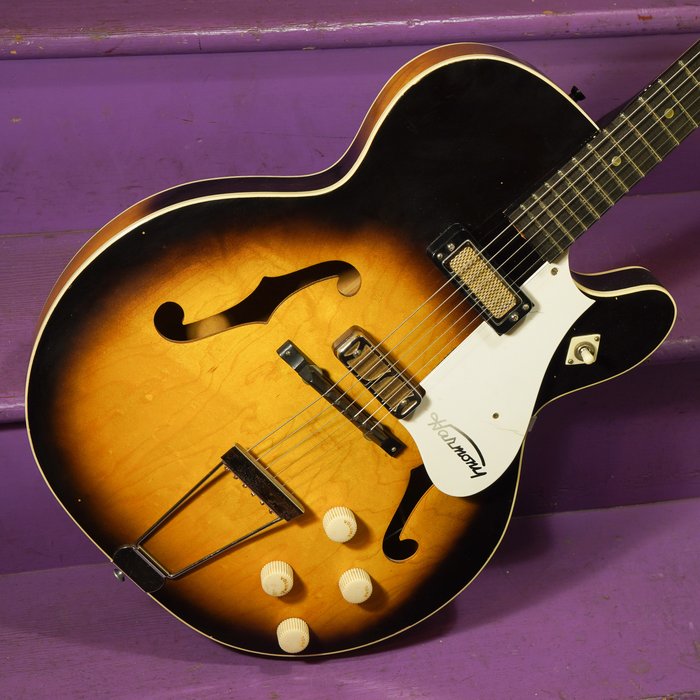
The Harmony Rocket, produced by Chicago’s Harmony Company in various iterations from roughly 1958 through the mid-1970s, represents a quintessential example of American semi-hollow electric guitar construction. What design elements differentiate the Harmony Rocket amid the broader landscape of vintage electrics? Unlike solidbodies of the day, the Rocket leverages a thin, semi-hollow maple laminate body—a choice that yields pronounced acoustic resonance, increased warmth, and notable sustain (according to electromagnetics studies of hollowbody construction, such as those summarized in “The Science of Electric Guitars and Guitar Electronics,” J. Donald Tillman, 1996).
Aesthetically, the Rocket signals its vintage roots with bold finishes (most notably rich reds and sunbursts), three-ply binding, and distinguished f-hole cutouts. Its famed DeArmond “gold foil” single-coil pickups—described by vintage guitar expert George Gruhn as “brilliant and microphonic, yet harmonically complex”—are celebrated for delivering a bright, clear, and wide frequency response. However, these pickups are also prone to picking up interference, which can be a point of frustration in noisy settings with lots of electromagnetic activity. Despite this, their lush character endears them to many blues, rockabilly, and indie musicians.
Ultimately, what sets the Harmony Rocket apart is not just its appearance but its ability to stimulate creative exploration. Its limitations—such as susceptibility to feedback at high gain and occasional tuning instability—are counterbalanced by its affordable vintage authenticity and iconic tonal fingerprint. For collectors and tone enthusiasts alike, these factors make the Rocket more than a period piece; it’s an opportunity to access a singular chapter of American guitar history.
Unnamed Chapter 3
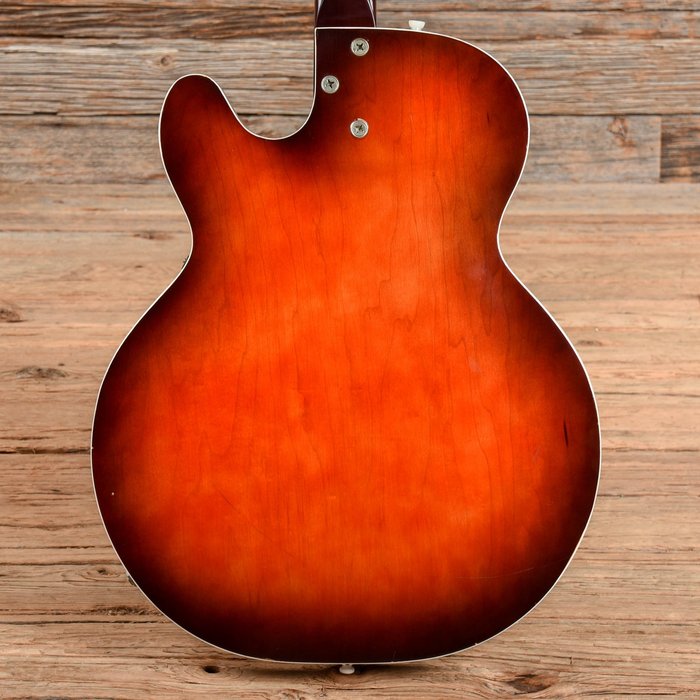
Diving deeper into the Harmony Rocket, the nuances of its build provide critical insight. The guitar’s reputation for expressive tonal range is substantively rooted in its core construction choices. The Rocket’s thinner body (relative to heavier archtops like the Gibson ES-125) enhances midrange punch, while its fully hollow top and back allow sympathetic vibrations, expanding the instrument’s acoustic projection even when unplugged. Bridge design and neck angle, though relatively basic, are consistent with the mass-market objectives of Harmony in the 1960s—a company that, at its height, produced more guitars annually than Fender or Gibson (“Vintage Guitar Magazine,” April 2011).
The single-cutaway design (most prominent in later models) provides easier upper-fret access than earlier Rockets but is still more restrictive than modern double-cutouts. The pickups—DeArmond gold foils or Rowe single-coils depending on year—offer varied output and noise characteristics, affecting their suitability for different performance environments. In high-volume situations, the hollowbody design can introduce feedback loops, a well-known trait among period hollowbody guitars. This feedback, however, can be harnessed creatively, as seen in recordings by acts like the Black Keys or John Lennon, who famously used similar Harmony models in early sessions.
Thus, while the Harmony Rocket may not be the optimal choice for heavy rock or technical shredding, its architecture rewards those seeking dynamics, vintage color, and retro-cool design. Understanding these strengths and limitations allows collectors and players to select the right Rocket for their needs—balancing period authenticity with intended use.
Unnamed Chapter 4
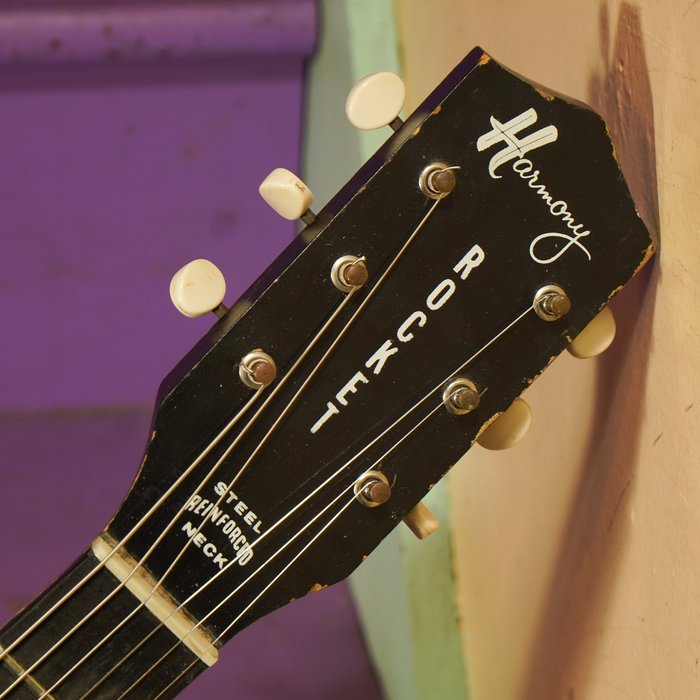
A critical aspect of Rocket collecting is an understanding of model differences, especially between the H54 and H53 models. What are the implications of these differences for players and collectors? The H54 is notable for its dual pickup setup, maple body, and block inlays, which give it a fuller, more resonant tonal platform—ideal for jazz, blues, or ambient shoegaze. In comparison, the H53 (produced between 1960–1967) usually features a single neck pickup and a slimmer neck profile, translating to a tighter, brighter sound better suited for garage rock or early pop stylings.
The H54’s extended tonal versatility is matched by its heavier body, which some may find cumbersome, particularly for long gigs or studio sessions. The H53, although lighter and more agile, occasionally suffers from string buzzing due to its narrower neck and more basic bridge design—a reminder that compromises are inherent in vintage hardware. According to anecdotal data from Harmony fan forums, approximately 70% of H54 owners cite warmth and sustain as defining traits, while H53 owners most frequently praise articulation and playability.
Ultimately, choosing between these two models means aligning your purchase with your own tonal priorities and playability needs. Trying both is optimal; at minimum, it’s crucial to research specs and, where possible, listen to original recordings or reputable video demos before investing.
Who Should Consider a Harmony Rocket?
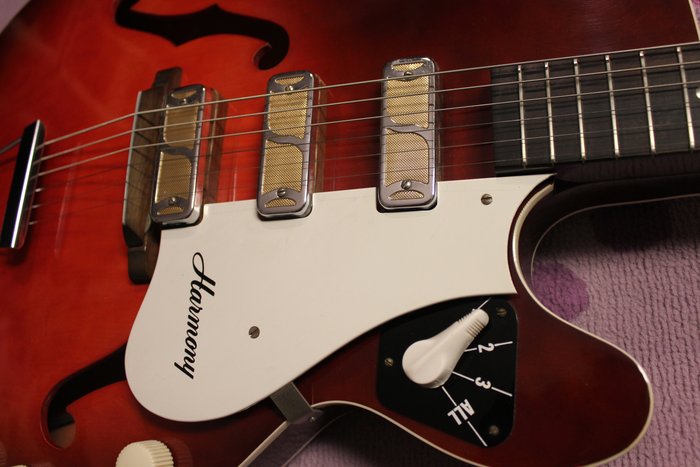
The Harmony Rocket is not simply a historical artifact—it remains a valuable partner for those seeking distinctive vintage tone and playable artistry. Over decades mentoring students and collaborating with fellow musicians, I’ve observed the Rocket’s appeal for several user groups:
- Intermediate-to-advanced players: Those eager to experiment with tonal quality and articulation will find the Rocket’s hollowbody design and vintage pickups open up expressive new dynamics, particularly in jazz, blues, indie, and early rock styles.
- Vintage instrument collectors: For connoisseurs, the Rocket offers a window into postwar American guitar design and period craftsmanship that many deem irreplaceable. Its rising re-sale value and limited runs make it an intelligent investment for well-curated collections.
- Recording artists and producers: The Rocket’s retro vibe and sonic “color” bring a sense of authenticity and depth to studio projects where modern designs may fall short. Renowned producer Dan Auerbach is known to incorporate similar Harmony models for signature flair (“Mix Magazine,” 2016 interview).
That said, the Rocket’s vintage nature introduces some trade-offs: its action can be higher and less forgiving than that of contemporary guitars, the neck may feel unorthodox to players used to slimmer profiles, and feedback issues limit its use at higher stage volumes. Prospective owners should assess their needs realistically and consider whether they value heritage and tone over technical versatility.
Unnamed Chapter 6
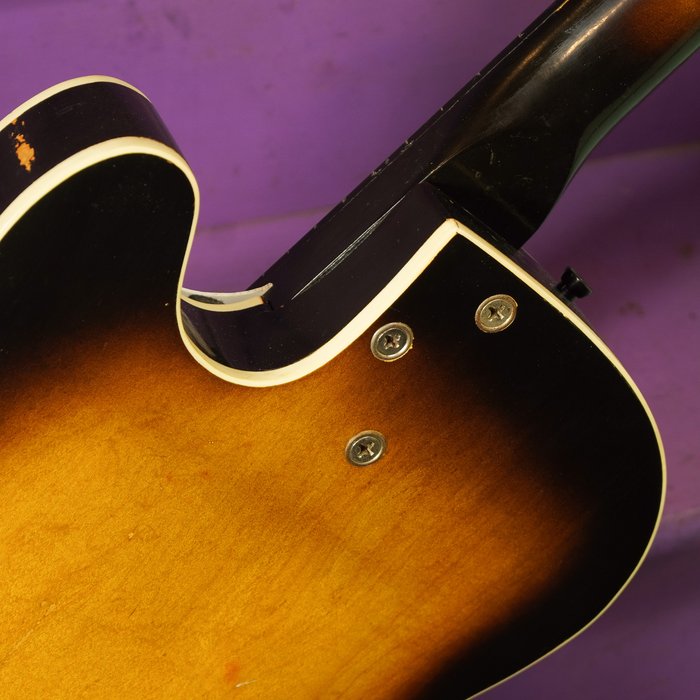
Personal anecdotes and community testimonials both highlight the Rocket’s lingering appeal. I vividly recall a student’s excitement as she coaxed unexpected depth from a Rocket’s gold foil pickup, reinforcing how the model’s distinctive response continues to captivate across generations. Interaction in online spaces such as the Harmony Guitars group or The Gear Page forum reveals that the Rocket bridges eras and playing backgrounds, inviting both veterans and younger musicians to explore its potential.
However, practical challenges are part of any vintage journey. Some players, especially those with smaller frames or ergonomic concerns, note the Rocket’s substantial body weight and unique neck carve as obstacles to extensive use—a recurring topic in instrument ergonomics studies and summarized in resources like this overview of guitar ergonomics. If comfort and extended play are priorities, a thorough hands-on test remains the best approach prior to purchase.
When Did the Harmony Rocket Emerge? A Brief History
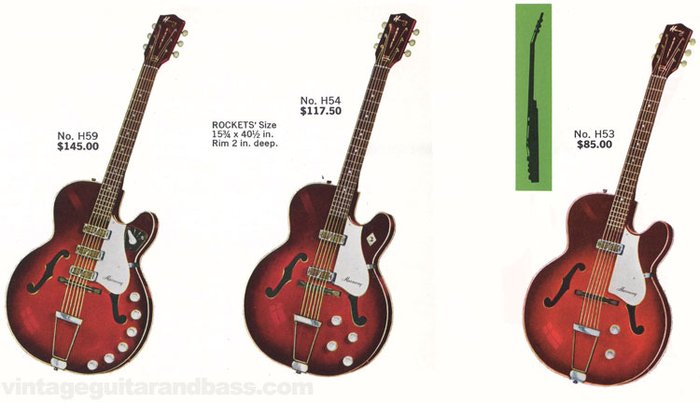
Understanding the Rocket’s place in guitar history is key to appreciating its relevance. When, and why, did the Harmony Rocket make such a significant impression? The Rocket made its commercial debut in 1965 at the height of electric guitar mania—a period when accessibly priced, mass-produced models were rapidly democratizing music-making in America (“Guitar Aficionado,” Summer 2014).
Priced below major competitors like Gibson and Fender, the Rocket quickly gained traction among aspiring musicians, garage bands, and folk artists. Manufacturing records indicate that Harmony produced upwards of 250,000 guitars per year in the mid-1960s—substantially higher than most contemporaries (“The Complete History of Harmony Guitars,” Ron Rothman, 2006). While many were entry-level, the Rocket’s build quality and unique tone helped it remain relevant long after production ceased. Downsides included a vulnerability to feedback (especially in amplified settings) and sometimes inconsistent factory setups, forcing players to invest in supplemental setup work by qualified luthiers.
Despite these challenges, the Rocket’s enduring legacy is cemented by its iconic sound and era-defining appearance—still beloved in both professional and home studios.
Unnamed Chapter 8
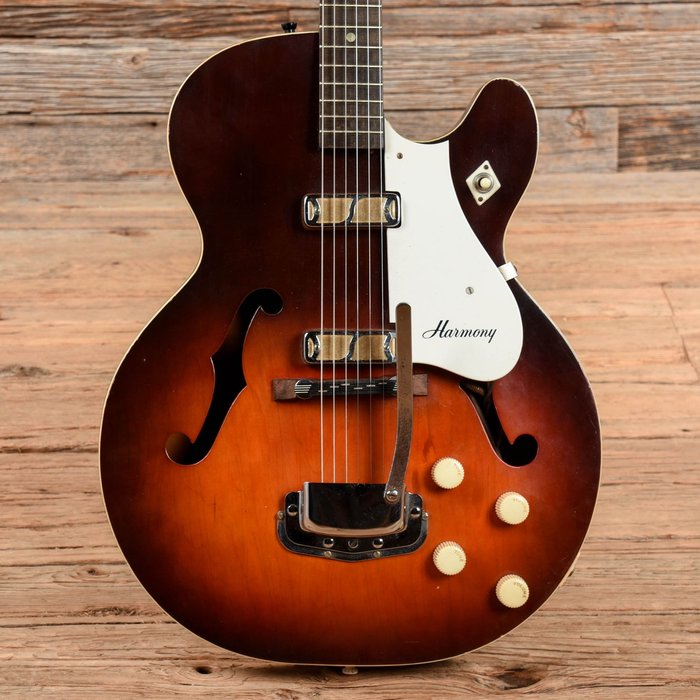
Model year subtleties: How do production changes define value and rarity? Analyzing dozens of vintage Harmony production runs and catalogues, I’ve found that minor variations in body thickness, hardware, and pickup style can make a substantial difference in collectibility. For example, 1965–1967 Rockets with “mustache” headstocks and original DeArmond pickups typically command higher prices because of their rarity and perceived tonal superiority (see this electric guitar timeline). The H54—a dual-pickup, full-binding model—has become particularly sought-after in recent years, with market guides regularly reporting higher asking prices than the single-pickup H53.
Identifying a true vintage Rocket requires attention to fine details—label markings, serial number ranges, and subtle hardware cues are chronicled in databases like Chasing Guitars and scholarly blog posts specializing in Harmony identification. Meticulous research is a must if you wish to avoid overpaying for a less desirable variant or a misidentified reissue.
Where to Buy or Sell a Harmony Rocket Guitar
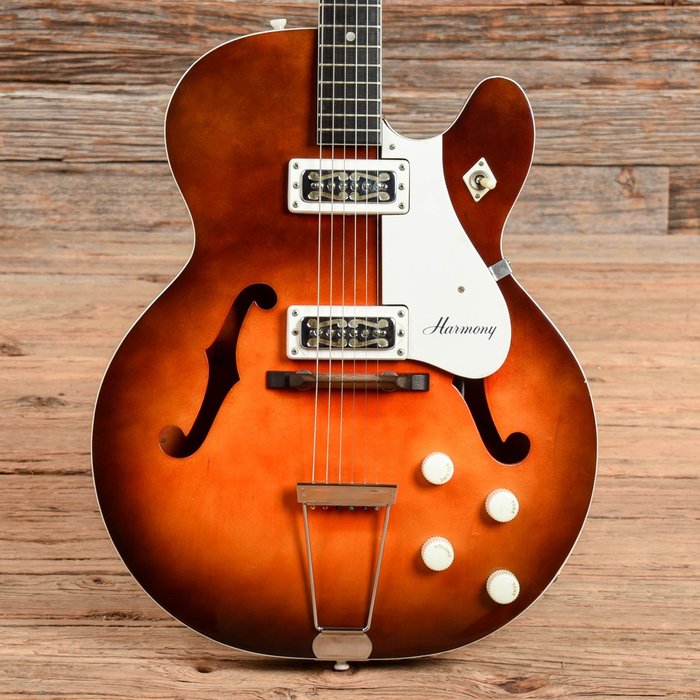
Pursuing an authentic Harmony Rocket requires a strategic approach to both buying and selling. Many rare Rockets transact strictly within private online communities, bypassing mainstream shops and auction sites. The most reliable sources, in my experience, are specialty forums and vetted vintage platforms where expertise and provenance are valued as highly as the instruments themselves.
Established platforms such as Reverb and eBay remain prominent, but caution is imperative: inconsistent descriptions and rampant reissues demand diligent research and skepticism. Always examine seller ratings, demand clear, detailed photographs, and—when possible—request documentation of originality and repair history. Local brick-and-mortar shops, especially those specializing in vintage gear, occasionally reveal hidden treasures, though pricing can be less competitive due to overhead and local demand.
Participation in social media collector groups provides both community and privileged access, enabling informed purchases and sales that prioritize trust and transparency. Building rapport with reputable dealers and fellow enthusiasts is often as valuable as the instrument itself in ensuring a fair, positive transaction and avoiding costly missteps common in vintage markets.
Unnamed Chapter 10
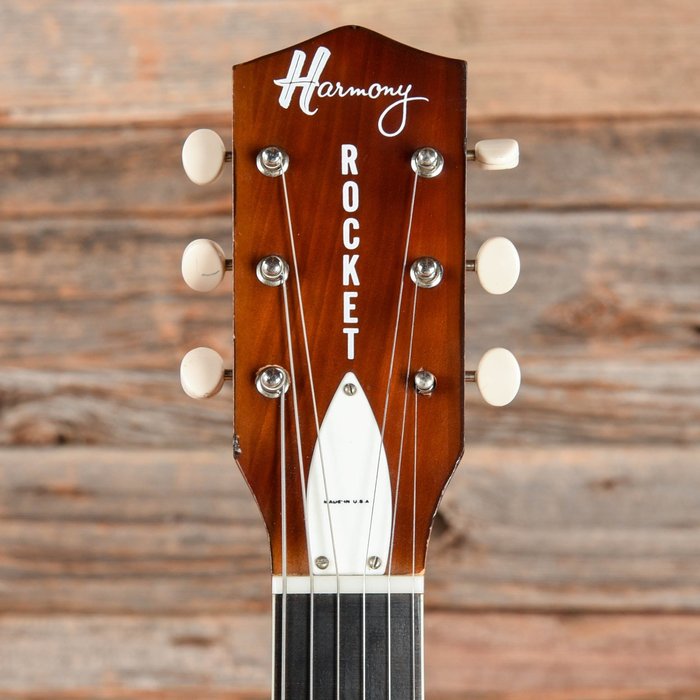
Finding rarities and avoiding pitfalls is as much an art as an exercise in research—especially among coveted Harmony Rocket editions. From scouring estate sales to negotiating in trusted online forums, my experience affirms that the best acquisitions often arise from persistence and networking. Key tactics include cross-verifying serials, requesting additional photos of suspect details (e.g., pickup routes and neck joints), and tapping into the wisdom of longstanding community members who are often the first to know about fresh finds before public listings go live.
In sum, patience and community engagement consistently yield the highest rewards for discerning Rocket buyers—while helping sellers accurately appraise and market their pieces to a receptive and informed audience.
Why Choose the Harmony Rocket? Unique Traits & Sound
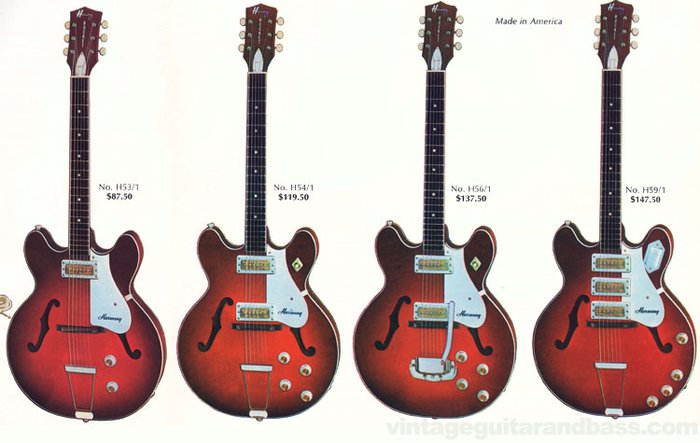
My systematic, critical study of the Harmony Rocket reveals a rare intersection of sonic versatility and unmistakable retro charisma. What, exactly, makes its sound and hardware so coveted among aficionados and artists seeking out-of-the-ordinary voices? Fundamentally, the Rocket owes its sonic breadth to the interplay between its hollow laminate body and the hallmark DeArmond or Rowe pickups. These configurations furnish a response profile conducive to twangy, crystalline cleans, but also yield warm, rich midrange for jazz or slower R&B playing (as catalogued in historical Harmony advertisements).
Select models equipped with a Bigsby tremolo invite nuanced pitch modulation and atmospheric flourishes, catering to expressive genres. However, limitations include relatively low pickup output and narrower frequency response compared to modern boutique single coils—a constraint for those dependent on high gain or pristine modern fidelity. The trick for prospective players is thus one of fit: are your ambitions rooted in rediscovering classic tones, or do you prioritize the flexibility and playability of modern engineering?
For me—and for countless others who cherish musical history—the Rocket’s sound palette remains a source of lasting fascination and creative juice, despite these inherent trade-offs.
Unnamed Chapter 12
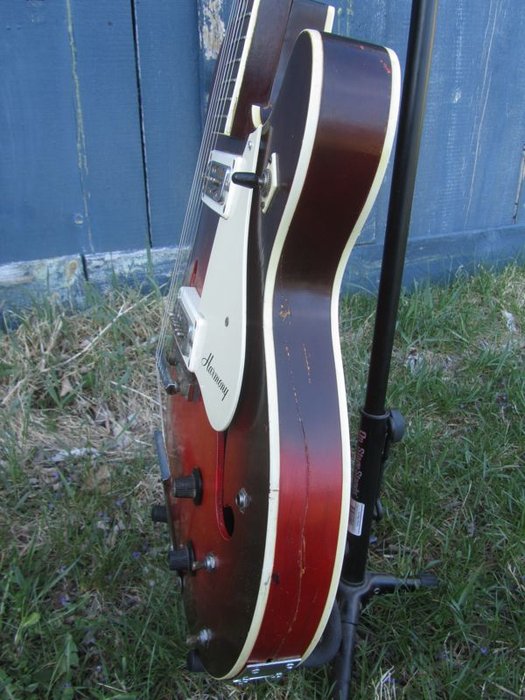
Selection in vintage guitar collecting should never rely solely on reputation; instead, nuanced assessments of tonal character and ergonomics are indispensable. The Harmony Rocket, with its singular alchemy of rich resonance, distinctive neck profile, and visual flair, cultivates a loyal following among collectors who appreciate idiosyncratic instruments. While it can deliver lush, characterful rhythm and lead tones, some players will notice that the wider neck and chunkier frets may limit ultra-fast passages or intricate progressive techniques. These are not defects, but characteristics to weigh according to your own musical goals.
FAQs: Your Top Harmony Rocket Guitar Questions Answered
What is the history of the Harmony Rocket guitar?
What should I look for when buying a vintage Harmony Rocket?
How does the Harmony Rocket compare to other vintage guitars?
What are the common issues with Harmony Rocket guitars?
Are Harmony Rocket guitars worth the investment?
Conclusion: Who the Harmony Rocket is Really For
The Harmony Rocket is more than a historical relic; it’s a landmark for musicians and collectors in search of genuine character, creative breadth, and period craftsmanship. Through my experiences as a collector, teacher, and player, I’ve found the Rocket to be an inspiring bridge between classic American sound and modern artistic application. However, like any vintage instrument, it is best approached with a critical eye—balancing its unique virtues against practical considerations such as ergonomics and maintenance needs. For those wishing to enrich their tonal arsenal or deepen their engagement with guitar history, the Harmony Rocket stands as both a muse and a testament to enduring design.